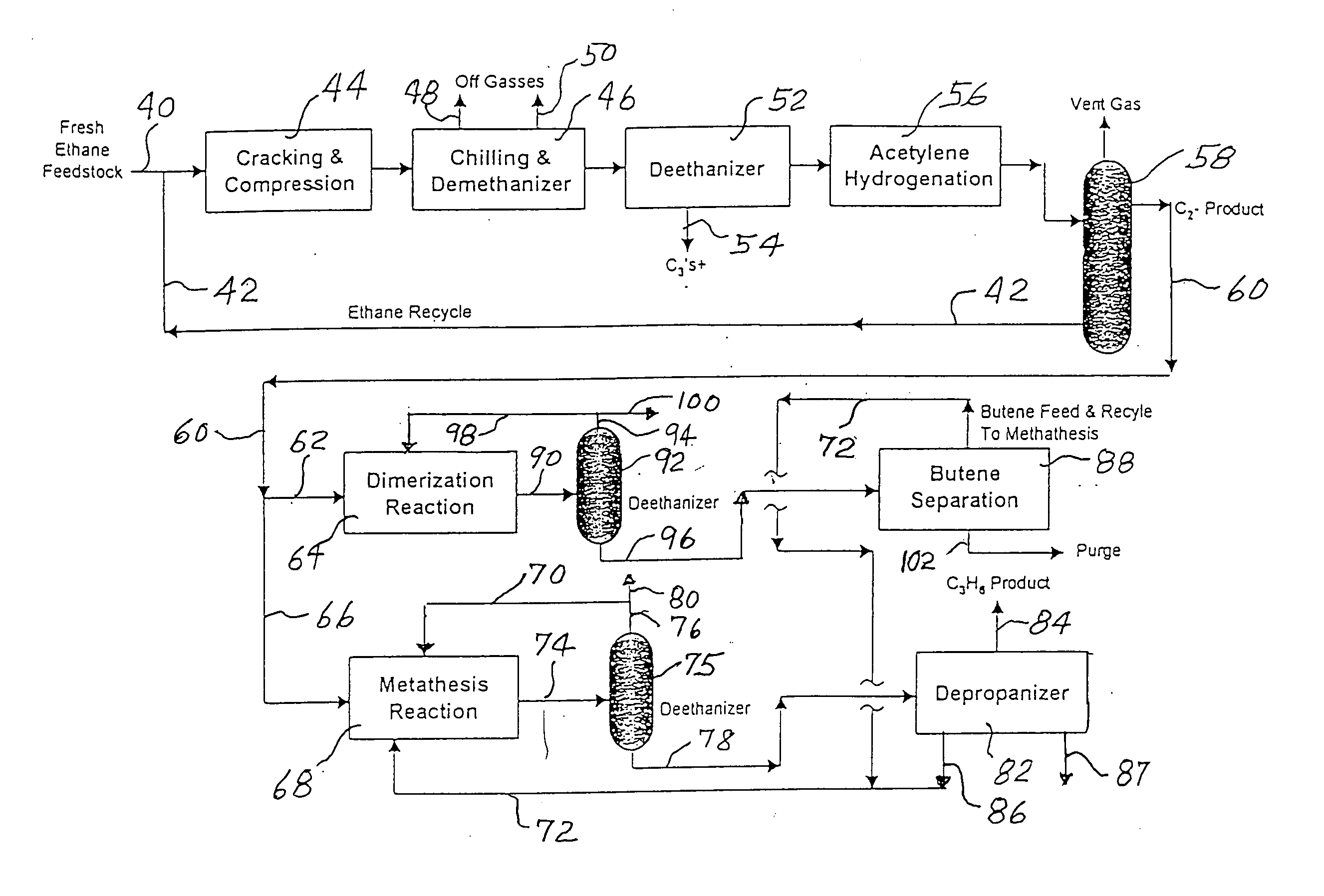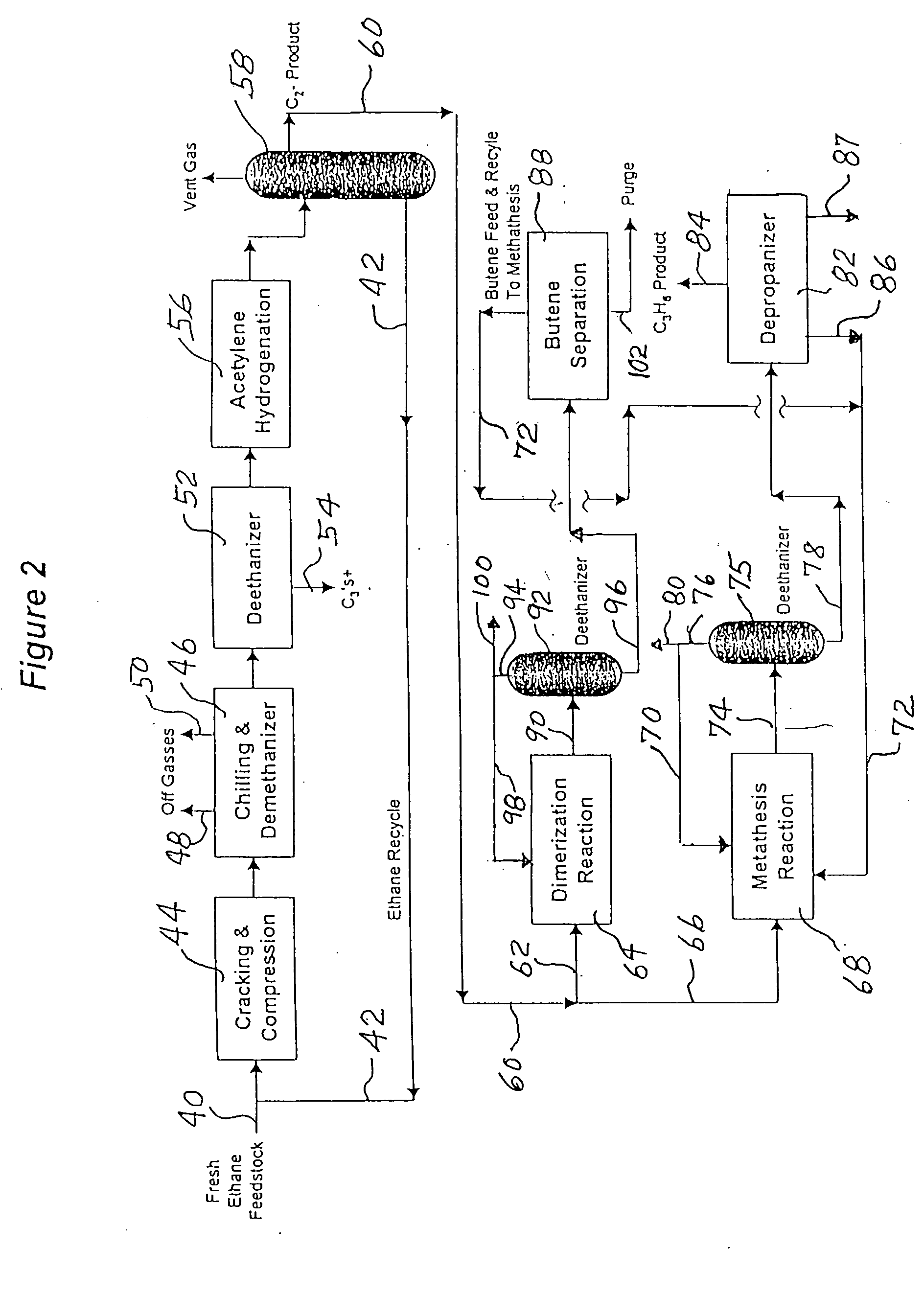Production of propylene from steam cracking of hydrocarbons, particularly ethane
a technology of propylene and hydrocarbons, which is applied in the direction of hydrocarbon by metathesis reaction, thermal non-catalytic cracking, sustainable manufacturing/processing, etc., can solve the problems of propylene production, propylene production, energy costs and capital investments of steam crackers using ethane feedstock, etc., and achieves the effect of improving and more economical methods
- Summary
- Abstract
- Description
- Claims
- Application Information
AI Technical Summary
Benefits of technology
Problems solved by technology
Method used
Image
Examples
Embodiment Construction
[0014] The production of ethylene from ethane feedstock in a steam cracking unit is widely practiced. FIG. 1 illustrates such a conventional steam cracker process using ethane as the sole feedstock. The fresh ethane feed 10, typically obtained by separation from natural gas, and a recycle ethane stream 12 are fed to a cracking heater 14 where, in the presence of steam, the ethane is heated with the resulting formation of ethylene and hydrogen as primary products and the formation of methane, C3 and heavier hydrocarbons as secondary products. Ethane once-through conversion varies between 50 and 80%, with most commercial plants operating in the 60-75% conversion region. The steam cracker effluent is then treated in the ethylene plant recovery section where it is first cooled at 16 and then compressed at 18. At 20 the compressed stream is then chilled to separate hydrocarbon condensates from light gases 22 such as hydrogen and CO and the hydrocarbon condensates are demethanized to sepa...
PUM
| Property | Measurement | Unit |
|---|---|---|
| Fraction | aaaaa | aaaaa |
| Percent by volume | aaaaa | aaaaa |
| Fraction | aaaaa | aaaaa |
Abstract
Description
Claims
Application Information
 Login to View More
Login to View More - R&D
- Intellectual Property
- Life Sciences
- Materials
- Tech Scout
- Unparalleled Data Quality
- Higher Quality Content
- 60% Fewer Hallucinations
Browse by: Latest US Patents, China's latest patents, Technical Efficacy Thesaurus, Application Domain, Technology Topic, Popular Technical Reports.
© 2025 PatSnap. All rights reserved.Legal|Privacy policy|Modern Slavery Act Transparency Statement|Sitemap|About US| Contact US: help@patsnap.com



